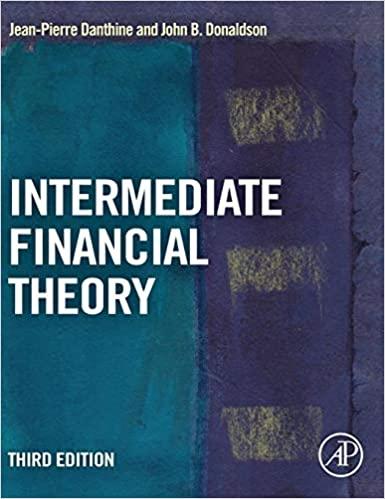Q Search Ch 03: Assignment - Financial Statements, Cash Flow, and Taxes MADISON: Yes, I do. Let's see if we can make these terms make sense by talking through their meaning and their significance to investors. ools The term book value has several uses. It can refer to a single asset or the company as a whole. When referring to an individual asset, such as a piece of equipment, book value refers to the asset's historical value or original purchase price adjusted for any accumulated depreciation or amortization expense. The net value, or difference between the machine's historical cost and its accumulated depreciation expense, is called its book value. In contrast, when the term refers to the entire company, it means the total value of the company's as reported In the firm's ps Rips TAJ: That makes sense. So, what makes this value important to investors is that it is value that can change-but only due to a couple of events, including the of Treasury stock, the sale of new common or preferred shares, and the payment of Equally important, it change in response to changes in the market prices of the firm's shares. MADISON: Right! So, how useful would a firm's book value be for assessing the performance of Extensive's management? TAJ: Well, because Extensive's book value with changes in the market price of the firm's shares, the firm's book value reflect management's efforts to maximize the shareholder wealth and therefore be used to evaluate management's performance Now, what about "Economic Value Added"? MADISON: During the 1990s, the consulting firm Stern, Stewart a company developed the concept of Economic Value Added, or EVA, to better assess management's performance in maximizing their shareholders' wealth Extensive's EVA equals the additional profit created in excess of the after tax operating income necessary to finance its total after-tax cost of capital, which is expressed in annual dollars. It is computed by subtracting Extensive's from its In turn, Extensive's annual cost of capital is calculated by multiplying its total its net fixed assets and net operating working capital, by the ar-tax percentage cost of capital operating capital, which includes OK, given that description, here's a question for your compared to the book value, what is the advantage of using the EVA to evaluate the MacBook Air Q Search Ch 03: Assignment - Financial Statements, Cash Flow, and Taxes MADISON: Yes, I do. Let's see if we can make these terms make sense by talking through their meaning and their significance to investors. ools The term book value has several uses. It can refer to a single asset or the company as a whole. When referring to an individual asset, such as a piece of equipment, book value refers to the asset's historical value or original purchase price adjusted for any accumulated depreciation or amortization expense. The net value, or difference between the machine's historical cost and its accumulated depreciation expense, is called its book value. In contrast, when the term refers to the entire company, it means the total value of the company's as reported In the firm's ps Rips TAJ: That makes sense. So, what makes this value important to investors is that it is value that can change-but only due to a couple of events, including the of Treasury stock, the sale of new common or preferred shares, and the payment of Equally important, it change in response to changes in the market prices of the firm's shares. MADISON: Right! So, how useful would a firm's book value be for assessing the performance of Extensive's management? TAJ: Well, because Extensive's book value with changes in the market price of the firm's shares, the firm's book value reflect management's efforts to maximize the shareholder wealth and therefore be used to evaluate management's performance Now, what about "Economic Value Added"? MADISON: During the 1990s, the consulting firm Stern, Stewart a company developed the concept of Economic Value Added, or EVA, to better assess management's performance in maximizing their shareholders' wealth Extensive's EVA equals the additional profit created in excess of the after tax operating income necessary to finance its total after-tax cost of capital, which is expressed in annual dollars. It is computed by subtracting Extensive's from its In turn, Extensive's annual cost of capital is calculated by multiplying its total its net fixed assets and net operating working capital, by the ar-tax percentage cost of capital operating capital, which includes OK, given that description, here's a question for your compared to the book value, what is the advantage of using the EVA to evaluate the MacBook Air







